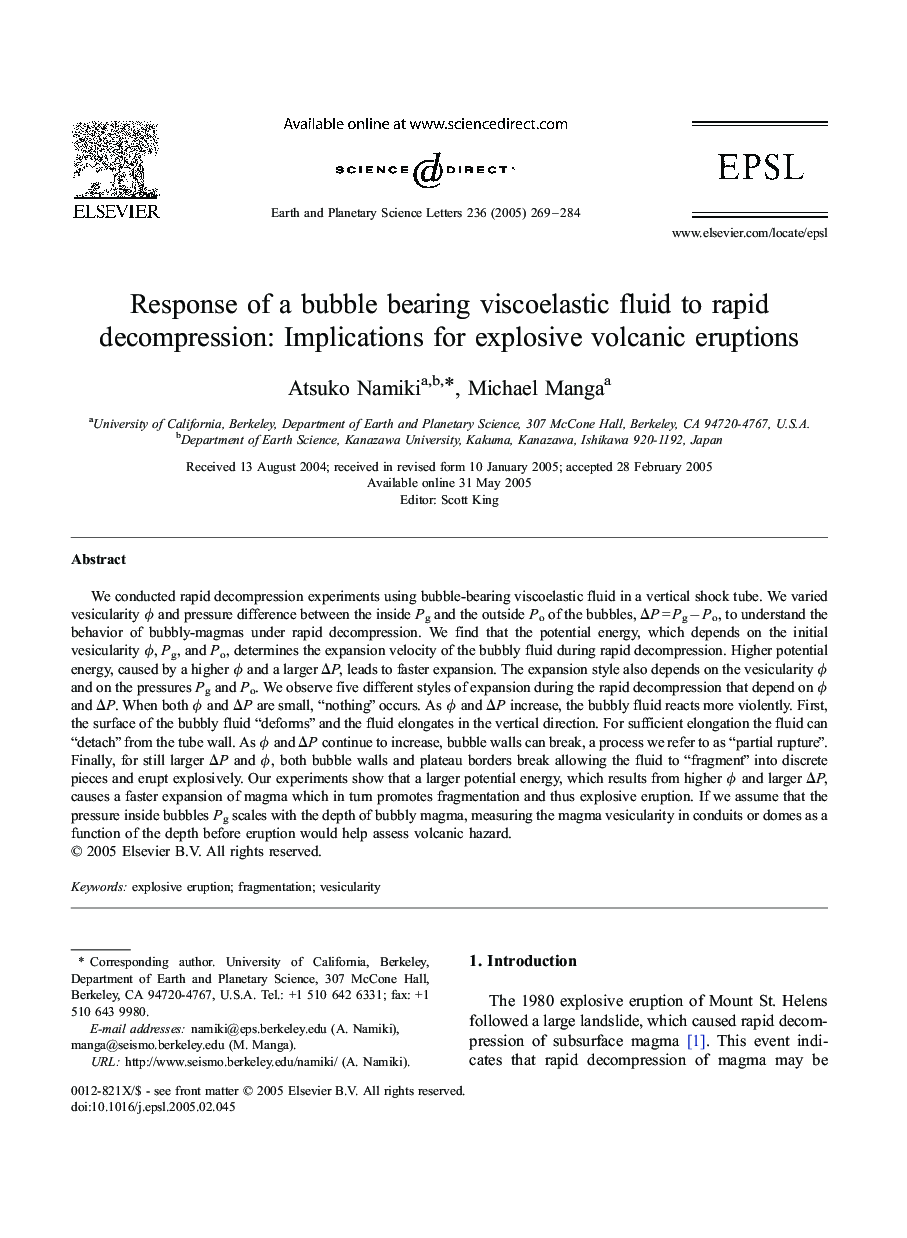| Article ID | Journal | Published Year | Pages | File Type |
|---|---|---|---|---|
| 9522146 | Earth and Planetary Science Letters | 2005 | 16 Pages |
Abstract
We conducted rapid decompression experiments using bubble-bearing viscoelastic fluid in a vertical shock tube. We varied vesicularity Ï and pressure difference between the inside Pg and the outside Po of the bubbles, ÎP = Pg â Po, to understand the behavior of bubbly-magmas under rapid decompression. We find that the potential energy, which depends on the initial vesicularity Ï, Pg, and Po, determines the expansion velocity of the bubbly fluid during rapid decompression. Higher potential energy, caused by a higher Ï and a larger ÎP, leads to faster expansion. The expansion style also depends on the vesicularity Ï and on the pressures Pg and Po. We observe five different styles of expansion during the rapid decompression that depend on Ï and ÎP. When both Ï and ÎP are small, “nothing” occurs. As Ï and ÎP increase, the bubbly fluid reacts more violently. First, the surface of the bubbly fluid “deforms” and the fluid elongates in the vertical direction. For sufficient elongation the fluid can “detach” from the tube wall. As Ï and ÎP continue to increase, bubble walls can break, a process we refer to as “partial rupture”. Finally, for still larger ÎP and Ï, both bubble walls and plateau borders break allowing the fluid to “fragment” into discrete pieces and erupt explosively. Our experiments show that a larger potential energy, which results from higher Ï and larger ÎP, causes a faster expansion of magma which in turn promotes fragmentation and thus explosive eruption. If we assume that the pressure inside bubbles Pg scales with the depth of bubbly magma, measuring the magma vesicularity in conduits or domes as a function of the depth before eruption would help assess volcanic hazard.
Related Topics
Physical Sciences and Engineering
Earth and Planetary Sciences
Earth and Planetary Sciences (General)
Authors
Atsuko Namiki, Michael Manga,
